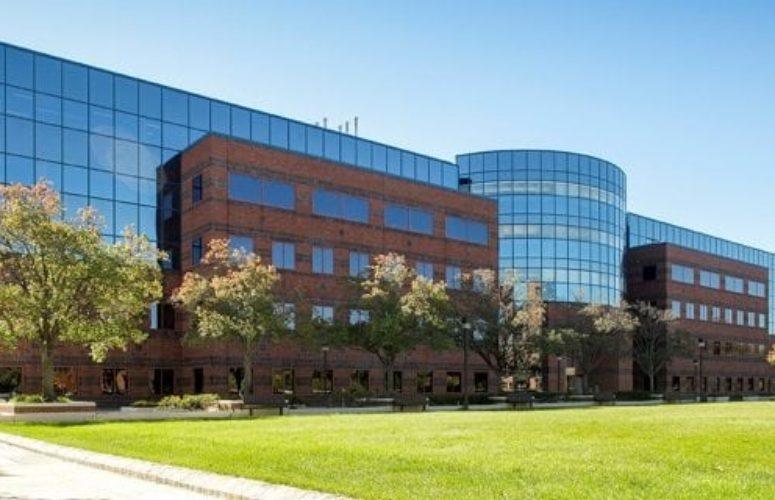
Data Centers and New Jersey: Perfect Together
There’s nothing nebulous about the fact that the state is a great place for the cloud!
By Eric C. Peterson, Contributing Writer On May 27, 2015The data center business continues to prosper in New Jersey, and if the axiom “location, location, location” applies anywhere, it’s here. Proximity to New York and its financial services sector is key, as is New Jersey’s location in the Boston-Washington, DC corridor. And while New Jersey isn’t necessarily an inexpensive place to do business, it’s certainly cost-effective compared to New York. Moreover, the state’s fiber and telco prowess comes into play in a very large way.
“New Jersey is close to the hub of world financial services, but it’s not within the hub, so people have the opportunity to put critical systems here and have some insurance and protection because there’s some physical distance,” says Michael Seeve, president of Mountain Development Corp.
“There’s also latency in connectivity between New Jersey and New York,” Seeve says. “Some of that is geography, and because New Jersey enjoys a great reputation for its infrastructure as a result of its legacy as a telco hub. Also, New Jersey offers reliability for power, which is essential.”
In addition to power and telco prowess, “fiber is everywhere you need it, and it’s well-connected to New York and the rest of the country,” says Donough Roche, vice president of Digital Realty Trust (DRT). His company has five data centers in New Jersey, including a major campus in Piscataway that includes the existing 365 S. Randolphville Rd. and 3 Corporate Place, now being joined by a third building at 1115 Centennial Ave. Combined, they’ll have an electrical load of 74 MW and occupy 700,000 square feet.
“When companies were laying fiber throughout the US, they wanted to create loops,” explains Joseph Simone, president of Tishman Real Estate Services. “They created a loop and redundancies to travel through New Jersey to get to the rest of the country. Also, New Jersey is right in the middle of the high-density northeast corridor.”
Tishman manages 165 Halsey Street in Newark, a 1.2-million-square-foot building with an interesting back story – it was a vacant former Bamberger’s department store, purchased by an investment group in 1996, began its new life as a “telecom carrier hotel” after the government deregulated that industry, and has evolved into a data center, telecom and colocation center with over 60 networks in the building, according to Simone.
Actually, 165 Halsey Street may be the exception, in one sense. “We’re not necessarily seeing large data center deals being done inside major urban centers,” says Sean Brady, senior director at Cushman & Wakefield. “They’re being done in the suburbs now,” he adds, noting this is a national trend. Cost is part of that and, at the same time, “they need to be on the edge of the market in order to serve their clients with latency issues.”
Why New Jersey? “It’s got great labor, access to markets and, currently, an abundance of space in a very competitive marketplace,” Brady says.
“There are a lot of competitors in this marketplace,” concurs Nelson Frye, senior director-business development for Sentinel Data Centers. His company has one facility in New Jersey – 800 Cottontail Lane in Somerset, which recently saw completion of its second phase. It now totals 50,000 square feet of raised-floor data center space and 230,000 square feet of gross space including back-of-the-house uses. A third phase of 90 to 100,000 square feet of additional data center space is in the works.
One trend he sees: Consolidations. “We have a very large pharmaceutical client that consolidated from 19 data centers down to four,” Frye notes.
Overall, where’s demand coming from? “Companies driving demand in the third-party market are financial services, cloud and media companies, and healthcare,” Brady says. For healthcare in particular, at least eight different hospitals are “currently in the market or have just completed data center deals,” he says. “Most of the major hospitals in New York have outsourced their data centers to locations in New Jersey.”
That demand is fueling a number of new data centers around the state. Among them: Net Access’ Parsippany II at 200 Webro Rd.; CoreSite’s 255,000-square-foot NY2 in Secaucus, and Equinix’s NY6 IBX, also Secaucus. Demand has also made data centers a hot investment commodity, witness QTS Realty Trust’s $75-million acquisition of McGraw Hill’s 560,000-square-foot property in East Windsor, a facility that includes a 58,000-square-foot data center floor. Under the terms of the sale-leaseback, McGraw Hill signed a 10-year lease with QTS, with a 15-year extension option. The 50-acre property includes a 14.1 MW solar field.
“This is probably the best time to sell this type of asset because it’s believed to be very safe and secure, so you’re getting very low cap rates,” Brady says, who recently brokered the sale of 2 Christie Heights in Leonia. “There are also buyers that will give you money to retrofit the building when you conduct a sale-leaseback.”
Given that these facilities do have “useful lives” and many need retrofits, what’s new in data center technology?
In the general sense, “server technology is constantly changing, and a lot of facilities need to be designed to meet differing needs,” Seeve says. “The best facilities can accommodate the widest range of individual users,” which fuels the need for ongoing upgrades.
“We’re always focused on efficiency,” Roche says, a focus that includes sustainability. In that regard, DRT has launched the Clean Start program, assisting new customers in “getting renewable energy into the data center. We’ll foot the incremental bill to provide green, renewable energy and promote a sustainable start to someone’s data center journey.”
Similarly, Sentinel’s model is new, “so everything we’ve designed in this template for our data centers is very efficient,” Frye says. “We’re driving the PUE [power usage effectiveness] down to very good levels. The power pass-through is to the customer, so the more efficient we make the power available from a cost perspective, the cheaper it is for them to operate in our facility.”
Another new Sentinel program: Transmission+, which offers availability levels approaching traditional best-in-class colocation with less infrastructure and recurring cost.
In terms of security, “the most secure facility would be in a cornfield in the middle of nowhere,” Seeve says. Since that doesn’t apply to New Jersey, “once one settles on a site, you have to design around it. Physical security, manned security and electronic security are equally essential items to bring to bear.”
According to Roche, DRT is focusing on compliance, “checking all the boxes for the industries our customers are in.” For healthcare, that’s HIPAA (Health Insurance Portability and Accountability) regulations; and for the financial industry that’s PCI (Payment Card Industry) and ISO (International Organization for Standardization) compliance.
In terms of client-specific security, “we added a K4-rated perimeter fence around an entire facility at the request of one of our large financial services clients,” Frye says. Another feature of Sentinel’s model: “Every tenant, in their own data hall, defines what kind of security they want within the suite. We treat it as if it’s their own data center.”
What does it cost for a tenant at a data center? “It runs the gamut,” Seeve says. “For an individual company that wants an individual rack, it could cost $1,000 a month. Users who lease entire facilities or large sections of facilities could be many multiples of that.”
Sentinel uses a price per KW model, according to Frye. “Base rent is determined by the size of the power requirement, so a MW facility will be significantly less than on a price per KW. Price per KW on a MW-size deal would be in the $140 per KW range,” he says, noting that for New Jersey, it would probably be 10 to 15 percent less than, say, North Carolina, “just because of order of magnitude.” And for smaller deals, in the 100 to 200 KW range, the cost would be in the $250 to $300 per KW range, base rent, plus a power component to the bill.
“Tenants are becoming better educated, looking to structure rents based on metered deals,” Brady says. “The competitive marketplace is allowing contracts to be negotiated a little bit more, and landlords are allowing a more flexibility in the contracts.”
Ultimately, cost is as “tricky question,” Roche says. “There are so many variables.”
Newer trends in the industry include companies deciding “what to keep within their own four walls, and what needs to be moved out to the cloud,” Frye says. “Over the next 5 to 10 years, the question is: ‘How do they, with the workload shift, optimize their floor plan with us, knowing that’s going to be variable? The IT director sits down with the real estate facilities manager, determining how much space is needed and what applications are going to be run. We try to right-size them, design the space they need day one, and provide options and as much flexibility as we can.”
“Cloud is a serious trend,” Roche says, noting that hybrid cloud is the computing environment in which an organization manages some resources in-house and has other provided externally. In that regard, “it is important for our customers, even if they have a traditional IT deployment, to have connectivity to a multitude of cloud providers to spread the load.”
A top resource in New Jersey, in that regard, is Lam Cloud’s Technology Campus in Cranbury. The 42-acre campus and its 500,000-square-foot building, said to be the largest workplace recovery facility on the east coast, is home to more than 30 companies.
“As the world goes to the cloud for off-site retrieval, New Jersey is a natural recipient because of its tremendous fiber redundancy and location right outside of Manhattan,” says Simone. And, overall, “my sense is that the New Jersey market is good right now, with a lot of competition, and will continue that way for some time.”
Related Articles:






